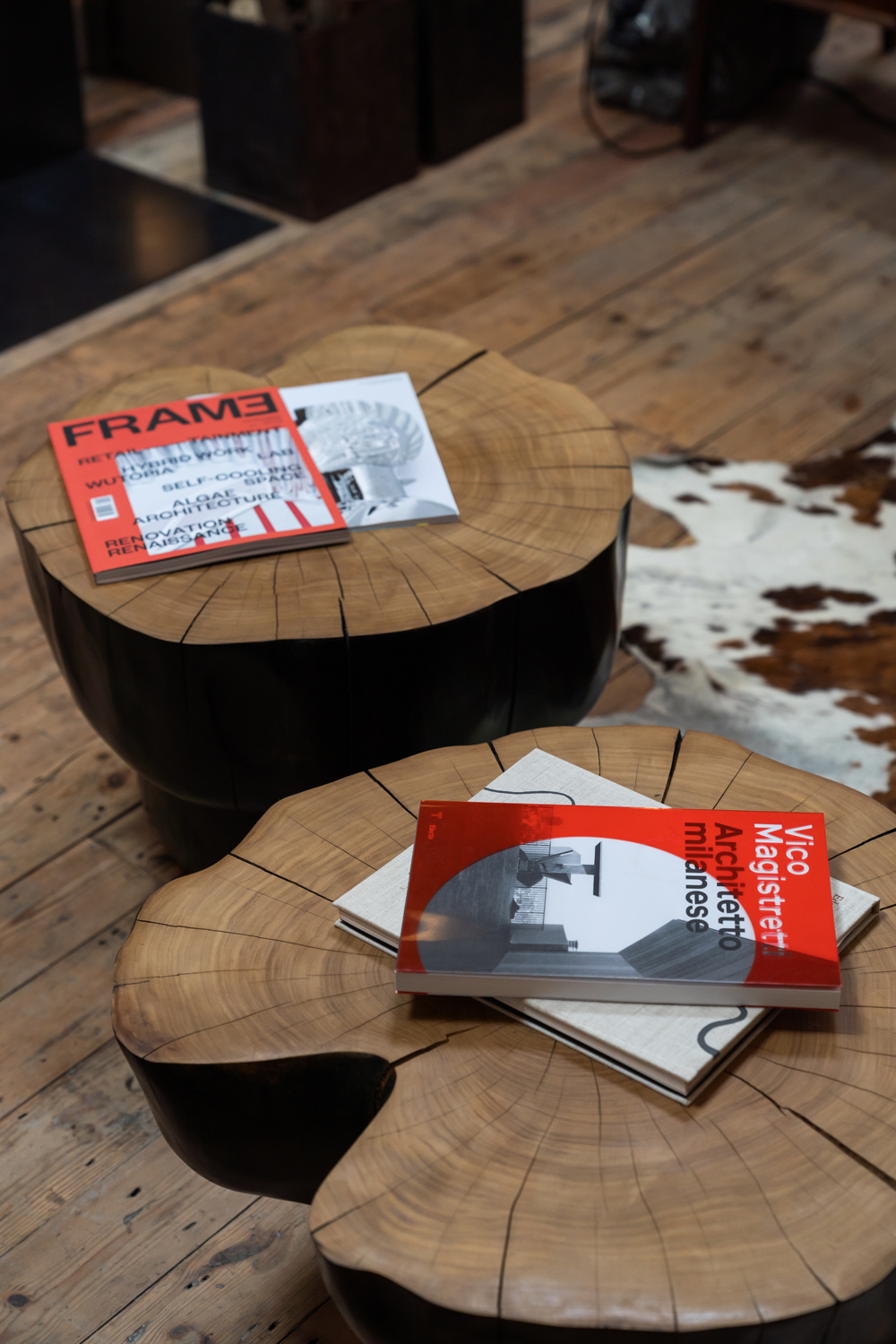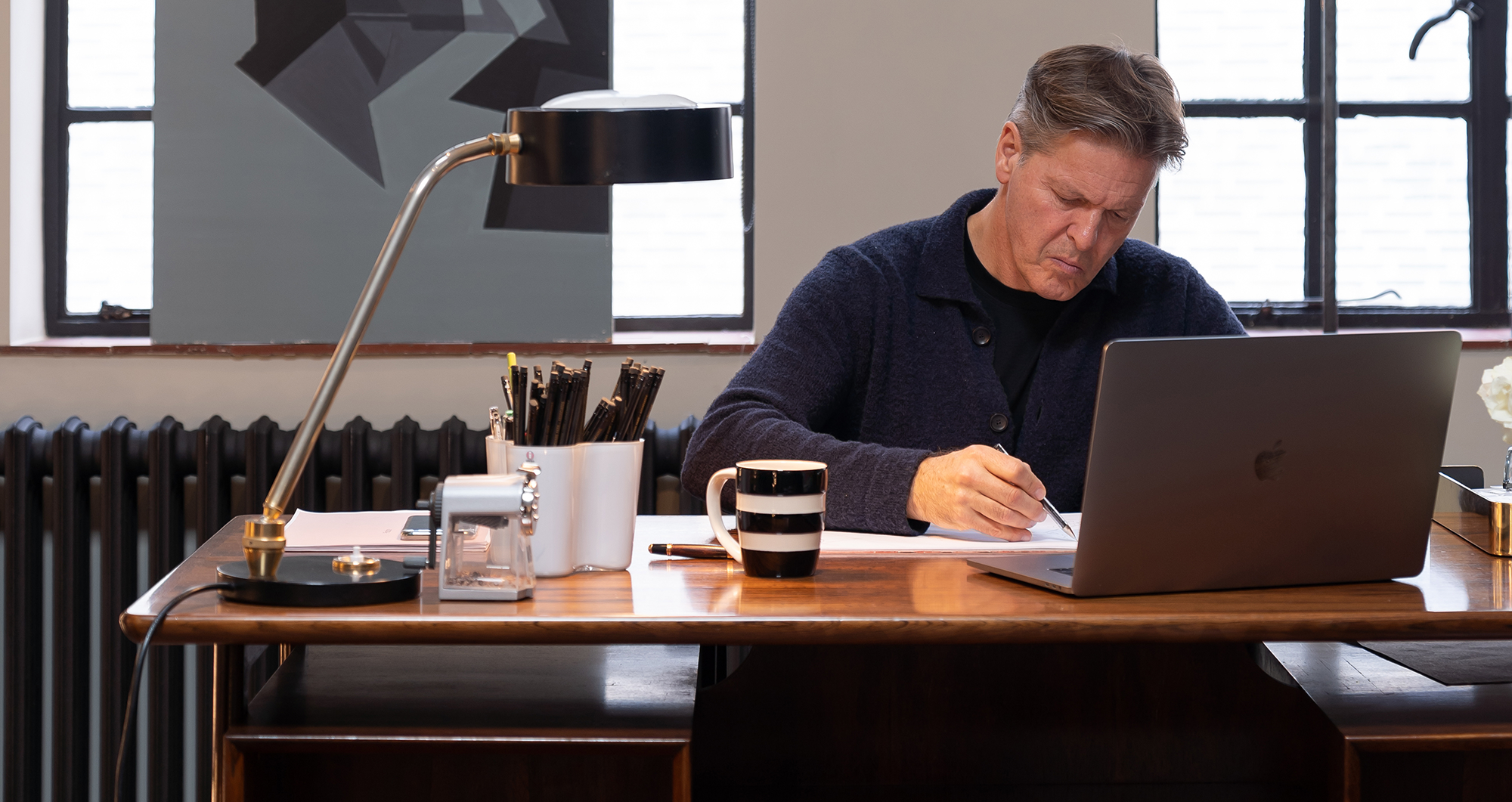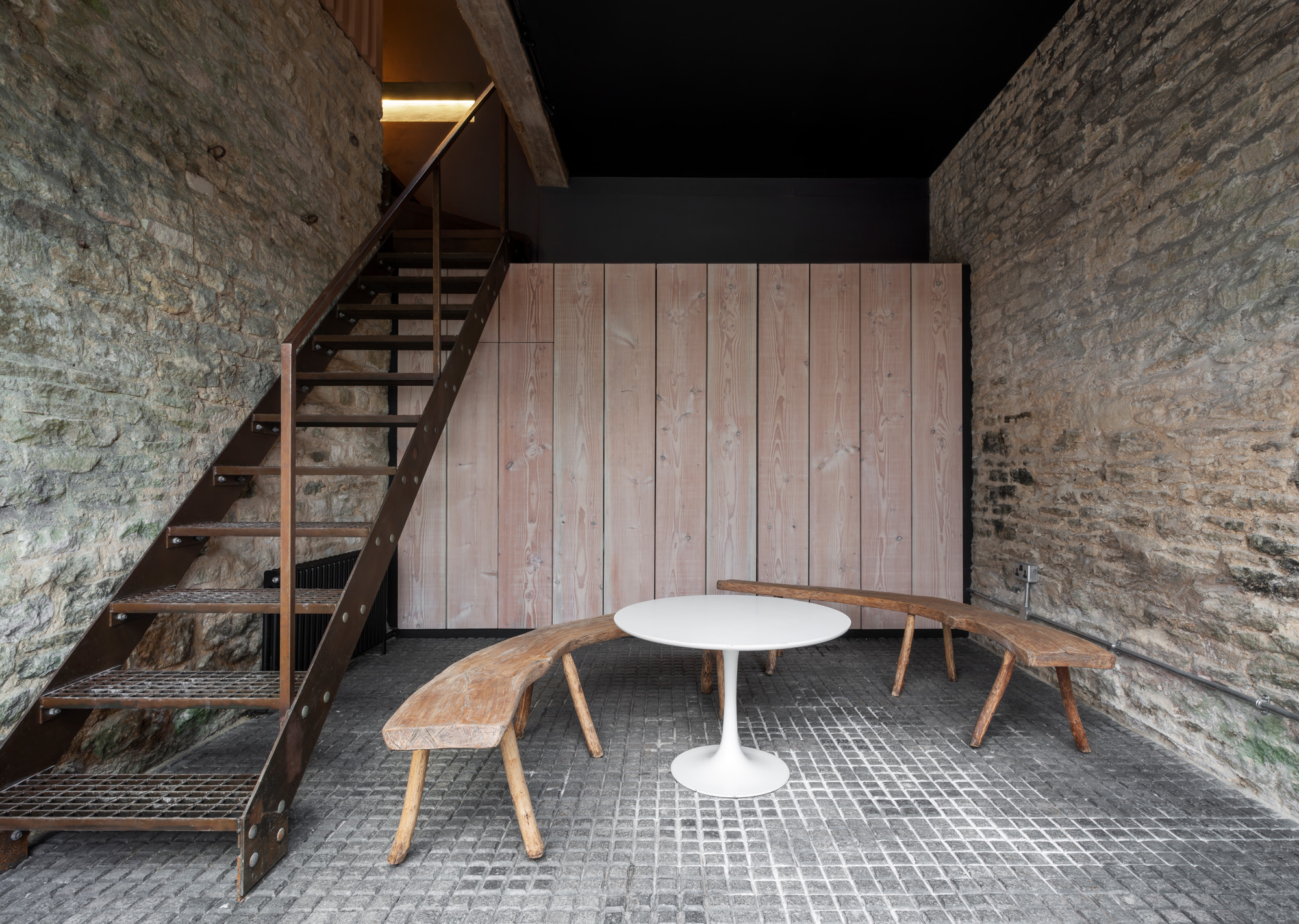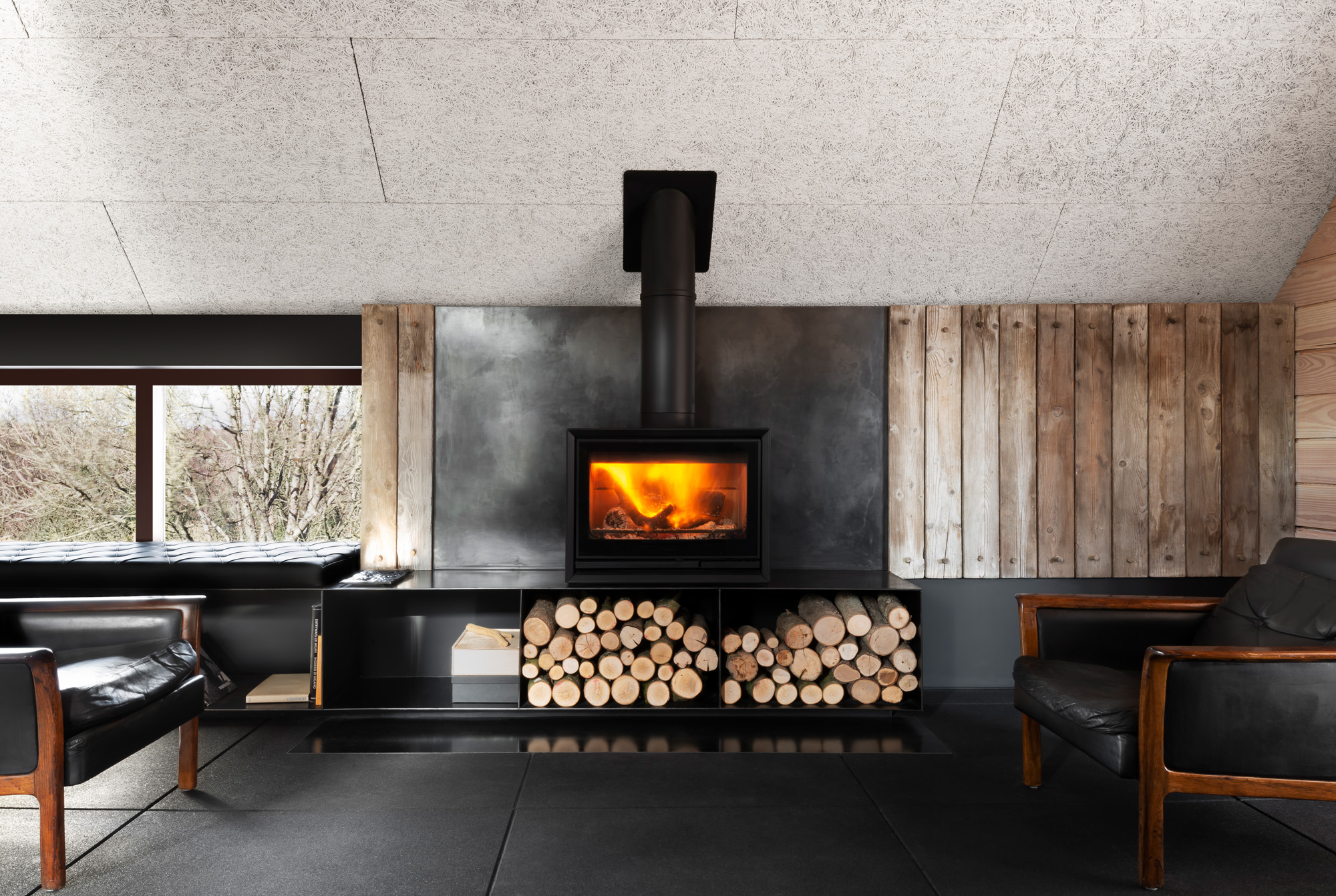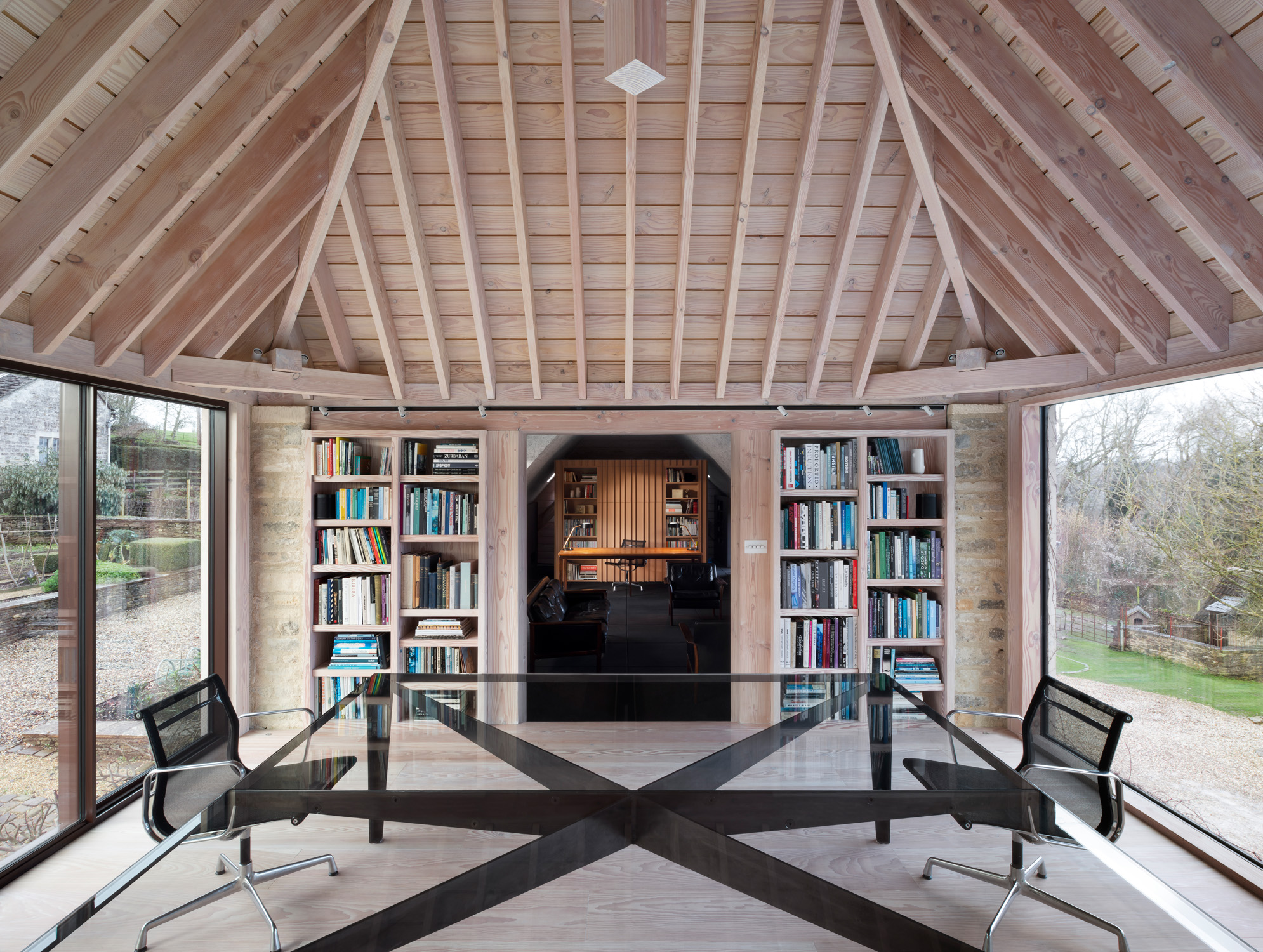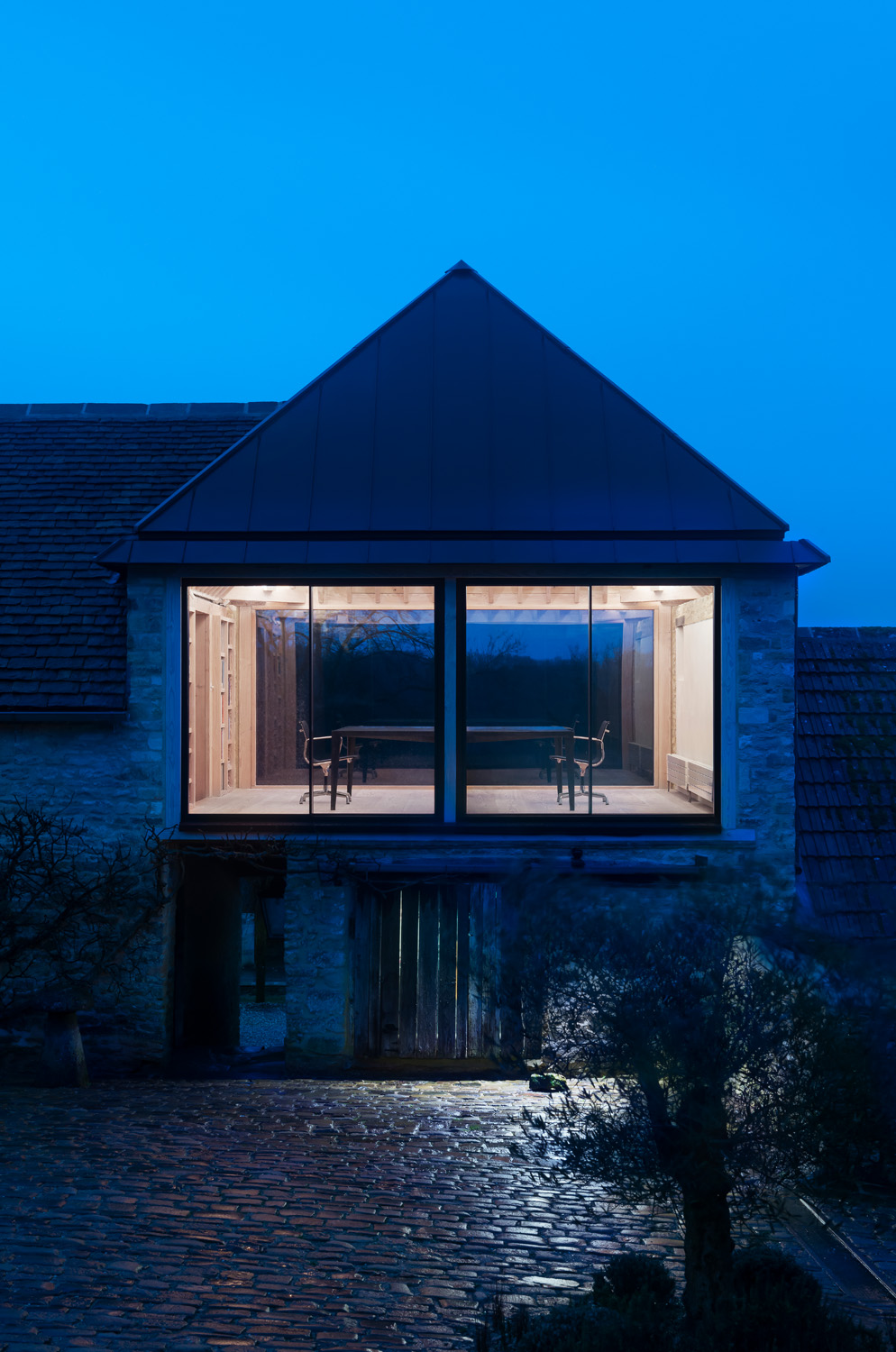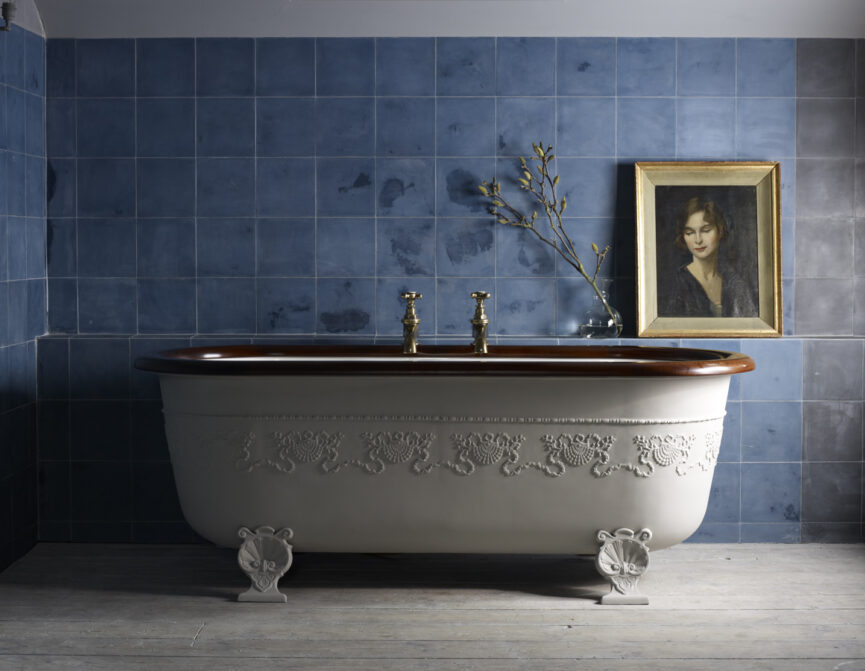An expert lesson in what we can learn from the past and how to weave history into contemporary design.
Imagine a historic building set against the English countryside. Its architecture hints at a legacy that dates back centuries and generations. What do you see? A sprawling barn? An old-world manor house? Perhaps even a disused warehouse? Richard Parr, director of Richard Parr Associates sees potential. It’s this idea of adaptive reuse that cements his role in preserving local identities yet changing the idea of what it means to live and work in rural England.
Richard’s team of architects work across London and the Cotswolds, carving new interventions into traditional building fabrics. With a foot in the country’s urban centre and another in its idyllic rural landscape, Richard’s founding ethos is what underpins their projects today; modern traditionalism.
“We learn from the past – material context, a building’s history and British vernacular – and project to the future,” Richard explains. It’s this ability to introduce the comforts of urban living to the traditional design tapestry of the country that allows him to move seamlessly between the two. “Increasingly, as the countryside started to attract sophisticated, cosmopolitan clients, the desire to emulate the luxuries of the city grew. As I had also made a similar transition over 10 years ago and understood what they were looking for, my practice was the natural choice for those looking to contemporise their homes”. His completed works are a striking addition to the surrounding landscape, diffusing boundaries between interiors and exteriors, a journey of sensitive reinvention and sustainable craftsmanship.
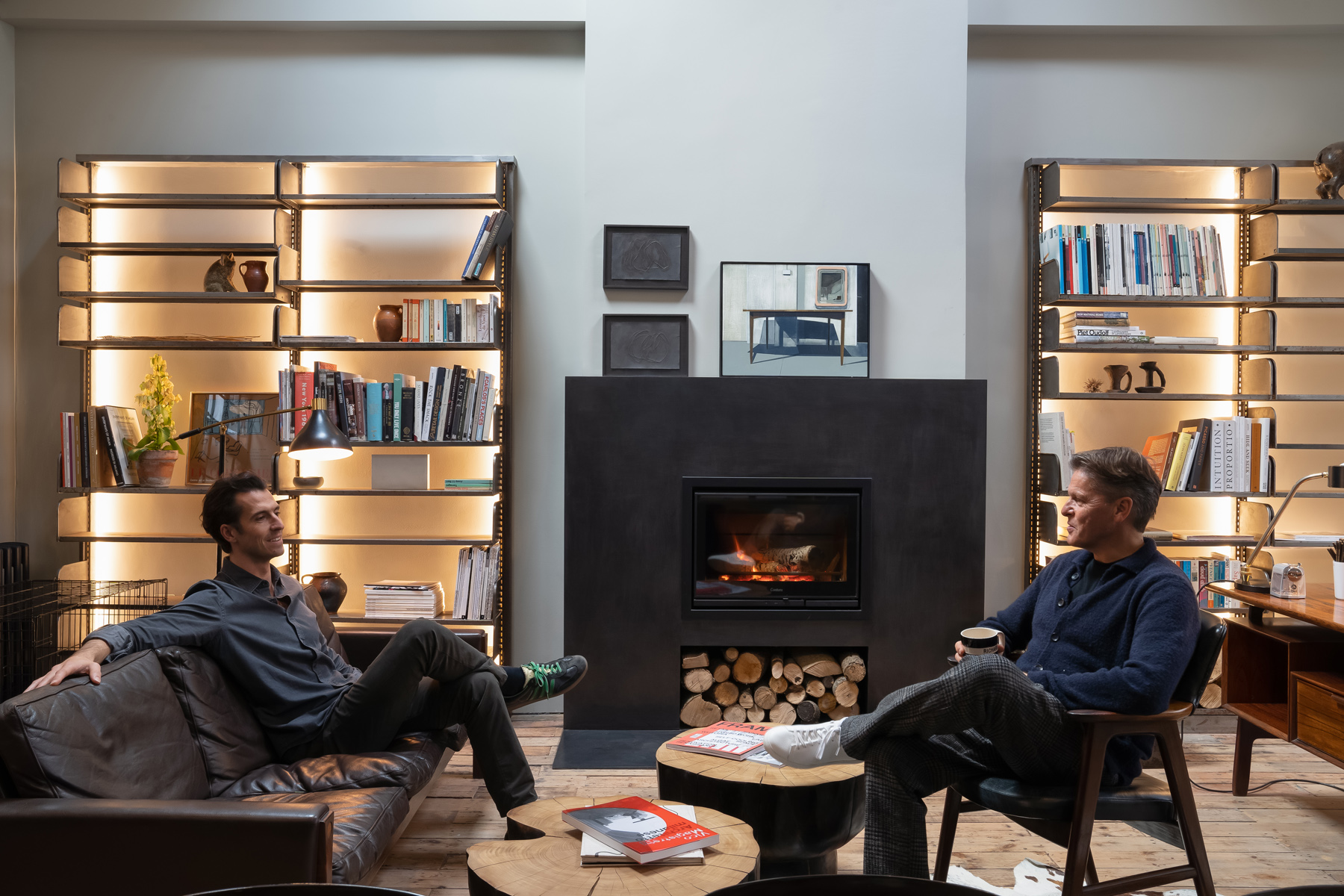
Richard’s projects fuse art and architecture; two subjects that he has been fascinated by from a young age. He credits childhood trips to places like Verona and Venice for sparking his desire to create beautiful spaces but it’s Coventry Cathedral that shaped his values of taking existing fabrics and remodelling them. “Coventry Cathedral embodies so much what I’m interested in because it’s about creating something new from the past. It projects forward with a legacy piece of architecture and yet, encapsulates the best of craftsmanship, of thinking, of artists at the time. Obviously, there is a very ritualistic design about it but when you consider it, a lot of the work we do is about people’s daily rituals, from using a bathroom to entertaining friends to going to bed. Designing those rituals into our buildings is the core of what we do,” Richard says.
Having first set up his studio on Westbourne Grove, his need for space as his family grew led him to open up a studio – Easter Park Farm – in the Cotswolds. True to his principles, Richard converted a series of 19th-century farm buildings into a range of contemporary workspaces clad in Douglas fir, Cotswold stone, recycled rubber flooring and furnished with mid-century furniture
Living and working in Stroud has brought Richard closer to the creative scene there too, “Stroud is the birth of the arts and crafts movement and there are so many arts and crafts designers. You can take Coventry cathedral as a 20th-century example of this design era, but the church that’s three miles from my house has been designed by William Morris. We’ve got works by Rossetti, Burne-Jones and Leighton nearby so there’s a strong tradition of creativity,” Richard smiles proudly.
The practice’s ongoing presence in London led them to open a new studio in Notting Hill. The new space takes over the first floor of the People’s Hall building, which once served as the cultural centre for the Republic of Frestonia – a commune of local artists and activists.
“When I walked into the space, I thought this is it. This is us. It was a little run-down but sometimes you have to go with your gut. I think its history is part of what drew me to it,” Richard recalls, “it’s a building that was used as a public or at least a semi-public space and we intend to honour that by hosting events and inviting people into it. We’ve always been keen to support community life”.

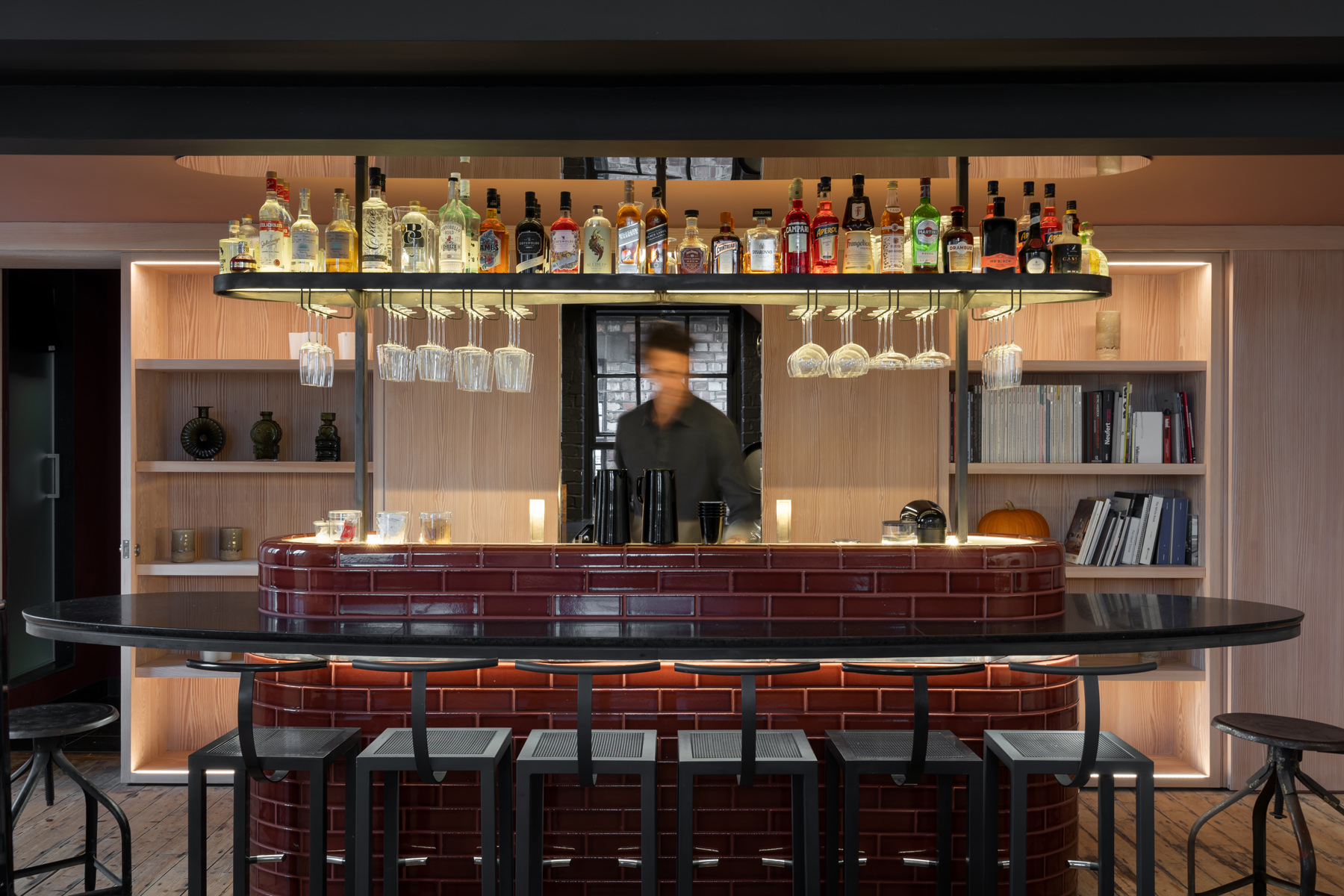
The London studio – People’s Space – takes a new perspective on office design: soaring roofs, a mezzanine where regular yoga classes are held, a central bar wrapped in terracotta tiles, a chef-grade kitchen hidden behind a sliding bookcase, and in the studio’s library, a warming wood burner. It’s a very relaxed office and the overall look is more reminiscent of residential design than a workspace, inspired by the shift towards working from home.
“The space has a lot of reclaimed pieces in it like the alter rail that encloses the mezzanine and the original flooring, which we lifted, insulated and then laid back down with their original nails. It was previously owned by an interior designer and we wanted to retain that part of its past too. This building has got so many layers, it would be a shame to cover it up. These elements are symbolic of its heritage and it was important to the previous owner that the people who would use it after would be creative and respectful, using its existing fabric as a reference,” Richard reflects. In his opinion, a laid-back approach to designing offices is more conducive to creativity and collaboration, a theory he tried and tested at the Easter Park Farm.
When I walked into the space, I thought this is it. This is us. It was a little run-down but sometimes you have to go with your gut. I think its history is part of what drew me to it.
- Richard Parr
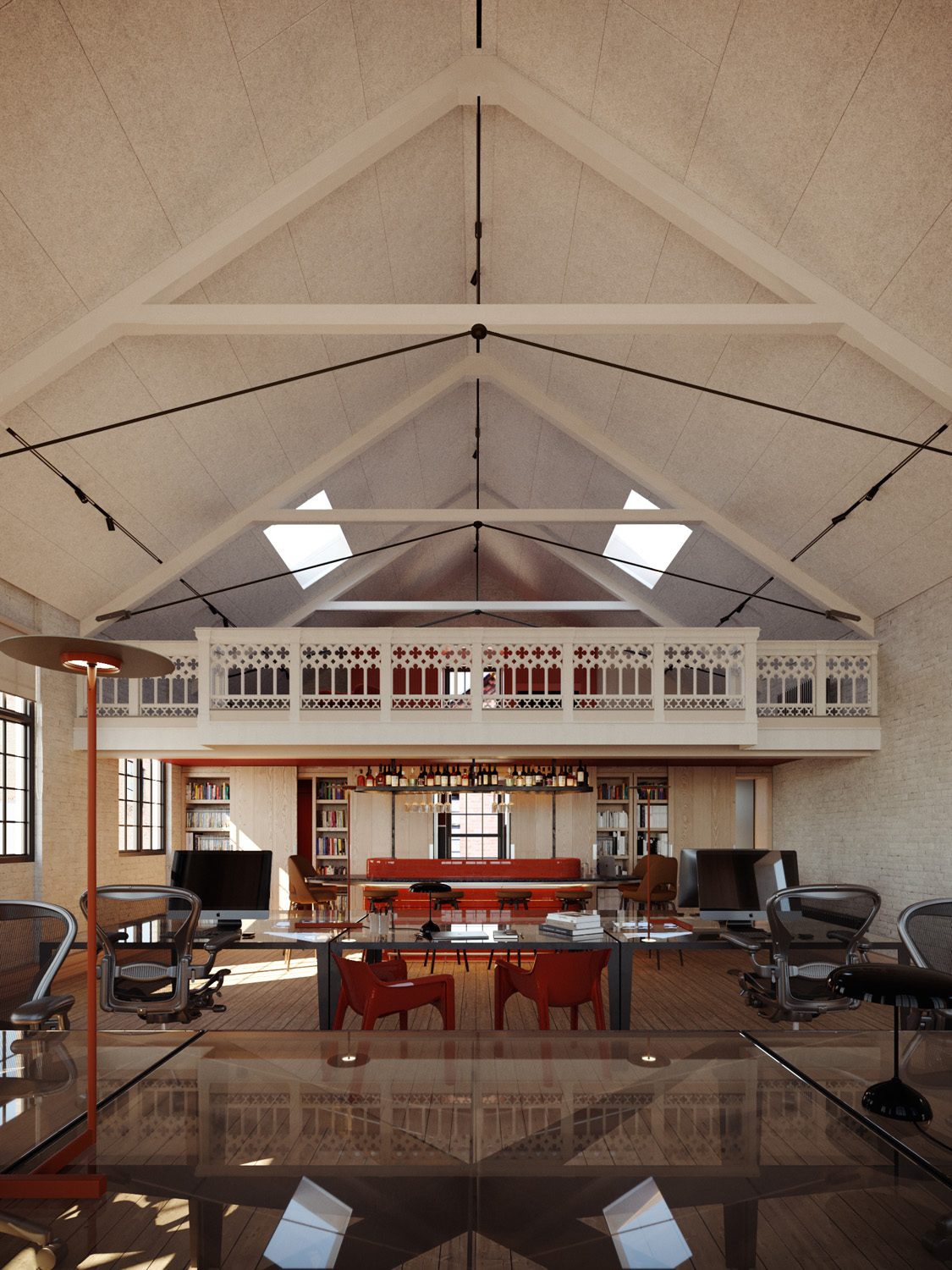
Colours are muted but are thoughtfully applied. The studio mixed their own paints and tones to refer to the surrounding architectural vernacular, like ‘People’s Red’ which hints at the external brickwork of the building. There are hints of Richard’s Cotswold studio in the People’s Space too – an industrial twist to its aesthetic. Pitched beams that have been lime-washed cut the soaring ceilings, windows encased with a dark metal frame and minimalist Danish mid-century furnishings. “We’ve brought elements of the country to this studio to put our mark on the space. For example, our craftsmen have carved the coffee tables from naturally fallen trees, reusing materials that have organically reached their end of life. We’re going to do a show on their work here, which I’m looking forward to – it’s important to showcase this kind of sustainable practice,” Richard notes, “the roof above us is made from shredded wood and is coated in CO2 -absorbing paint by Graphenstone.”
While the space might enhance creativity, wellbeing is another central aspect; the high-spec kitchen and bar encourage gatherings and team members take it in turns to cook lunch for the office – its diversity makes these occasions particularly exciting. One week might be risotto, another could be stir-fry. Equally, for those looking for privacy, there’s no need to stay glued to your desk. “People can use the space how they wish. They could get up and walk around, have meetings in the mezzanine and make use of the library,” Richard lists.
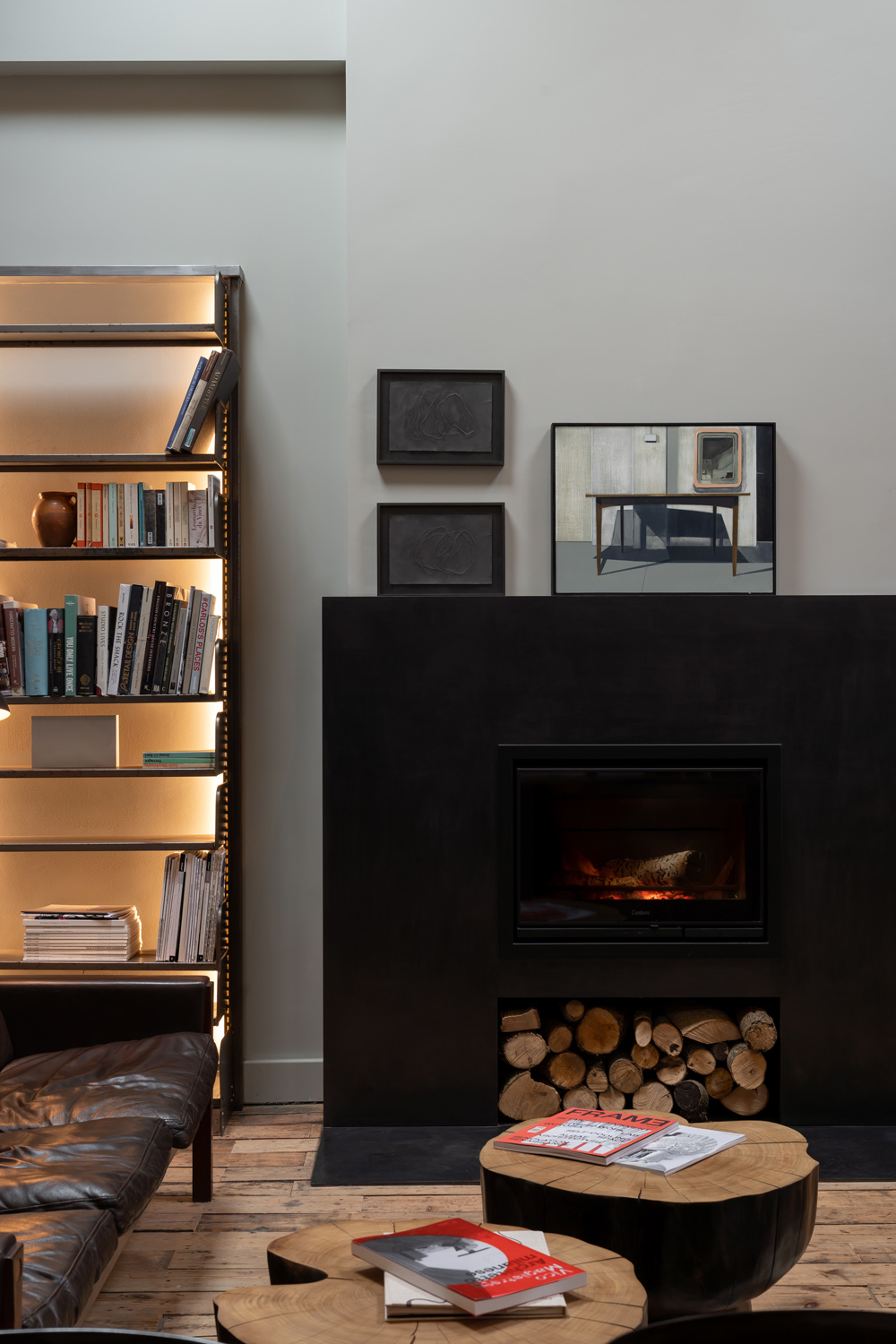
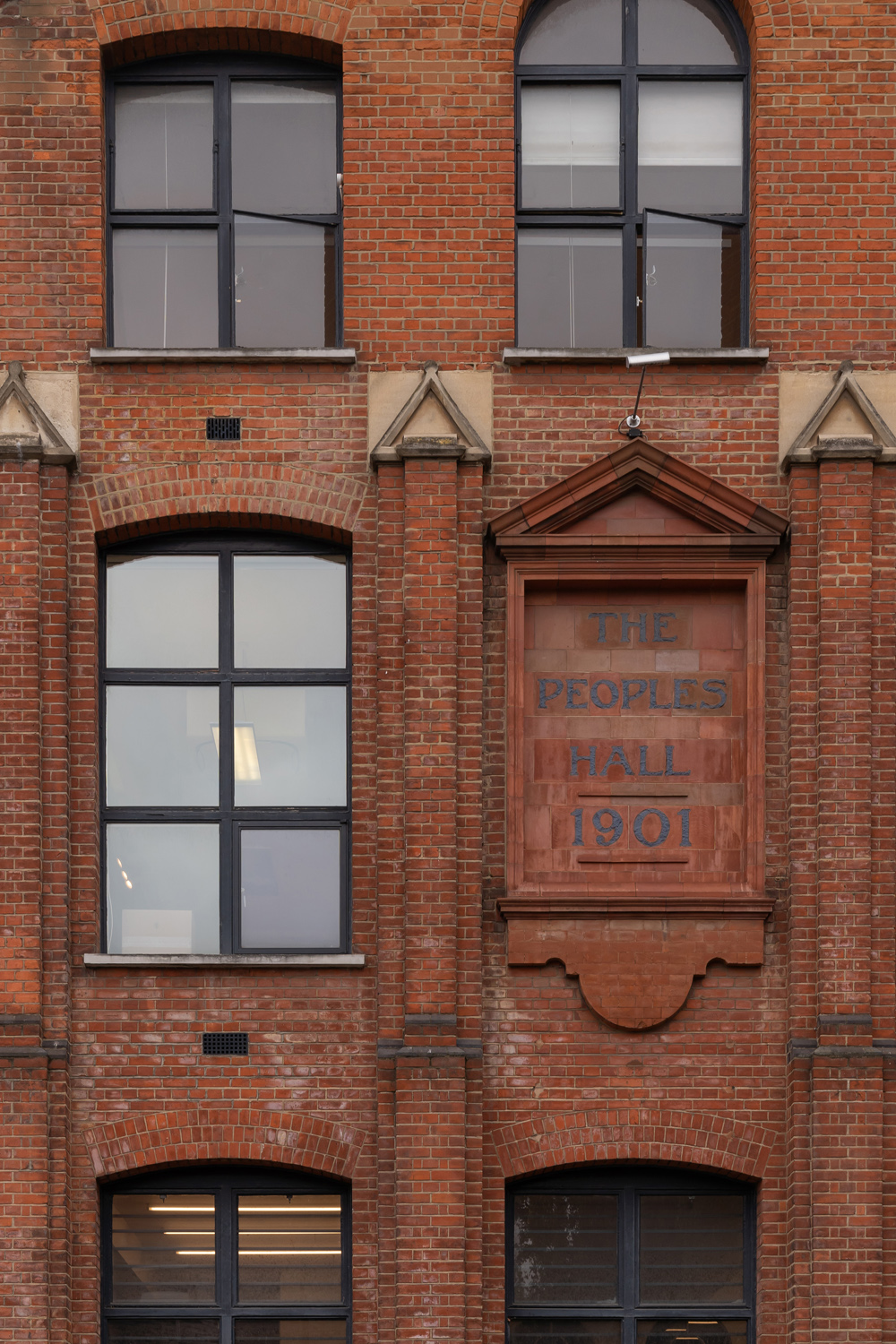

Although his Cotswolds and London studios might have some similarities, Richard points out they each have very different energies. People’s Space is centred around the richness of London architecture and urban materials. Meanwhile, Easter Park Farm makes use of floor-to-ceiling glass walls and scenic views. “It’s got a strong connection with nature and the acoustics change as you go between the different office spaces”.
Both are connected by history and Richard’s passion for adaptive reuse. “Preserving the essence of the place is important to us because we don’t like to sanitise. Our work isn’t shiny, we distil something that was always there into something new. It’s rethought, reengineered and projected forward. As a practice, we are keen to connect with identities and localities”. The concept need not be limited to older buildings either. Richard points to the numerous high-rise office spaces that have been recently vacated as attitudes towards working patterns have changed. “There’s nothing intrinsically wrong with those office floors. They’ve been designed for quantity rather than quality. They’re rational rather than emotive spaces. Design should be concerned more with emotions than pure need but to do that we’ve got to analyse how we want to live,” Richard says.
With established offices in London and the Cotswolds, Richard and his team have well-connected bases that make working across England much more fluid. Given the breadth of their portfolio, Richard’s long-standing relationship with Notting Hill made it the obvious choice for his new studio. As their presence and work expands, there are several exciting projects in the pipeline.
